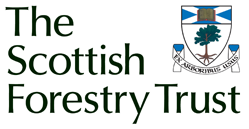Using satellite imagery to improve Hylobius prediction
Carried out by: Forest Research
Summary Description:
Hylobius can cause significant damage on seedlings, especially on restock sites. Forest Research (FR) is attempting to refine the current Hylobius Management Support System by building models to predict ‘site-to-site’ movements of Hylobius between clearfellings. This relies on an understanding of when movements will occur between ‘sources’ and ‘sinks’ in relation to felling dates.
In this context, satellite imagery will be used to track the location, scale and timing of newly felled areas so that they can be timely categorised as ‘sources’ or ‘sinks’ and linked to the seasonal patterns of Hylobius. To do this, FR is adapting the US Forest Service LandTrendr application to construct monthly estimates of areas being felled using time-series of Landsat imagery complemented with the EU-satellite Sentinel-2. This technique undertakes a web search for the best available pixels that configure satellite images at a particular location. The best pixels are then stitched together to give a Best Available Pixel (BAP) mosaic.
The desired outcomes will be a better prediction of Hylobius forest-scale movement, a minimisation of insecticide inputs and beating up and the reduction of the fallow period.
Timescale: 2017-2018
SFT Funds Awarded: £10,000
Project Outcomes:
Time-series of medium resolution satellite imagery has been used to map the location and extent of logging operations in two study areas in Dumfries and Kielder forest. The location of new clearfelling sites is paramount for the operational use of the Hylobius Management Support System (HMSS) model.
The method of analysis has involved the modification of the LandTrendr tools that were developed by the US Forest Service in the West of the USA to monitor disturbances and the recovery of the vegetation after an event. Here this method is focused on the use of Landsat series of sensors to extract the Best Available Pixels to reconstruct scenes 10 years back in time.
The raw data is batch processed and converted to Tasselled Cap Wetness (TCW) index. The values associated to this index are a robust indication of the presence and absence of woodlands, the date of a disturbance and the recovery of the vegetation afterwards.
The method was capable of delineating the perimeter of the areas that had been felled in the past and accurately relate this information to the time when the logging operations took place.
However the method is still partially constrained by the traditional cloud cover of the British Isles. So, the results for some years are partial in comparison to the good results observed in other years with more suitable weather conditions.
Overall, the satellite-based method is a substantial improvement in comparison to the traditional reliance on field records. Satellite-derived spatial datasets makes the HMSS model less dependent on field observations that can be difficult if not impossible to obtain from the private land owners.
